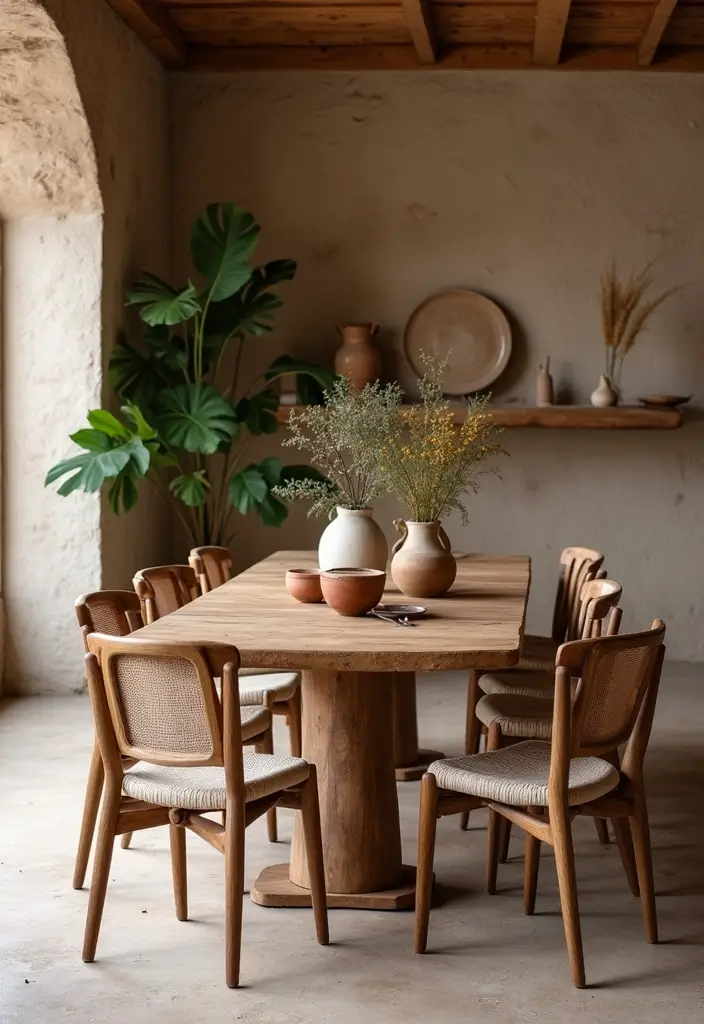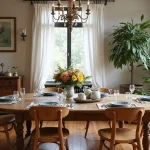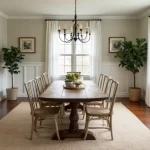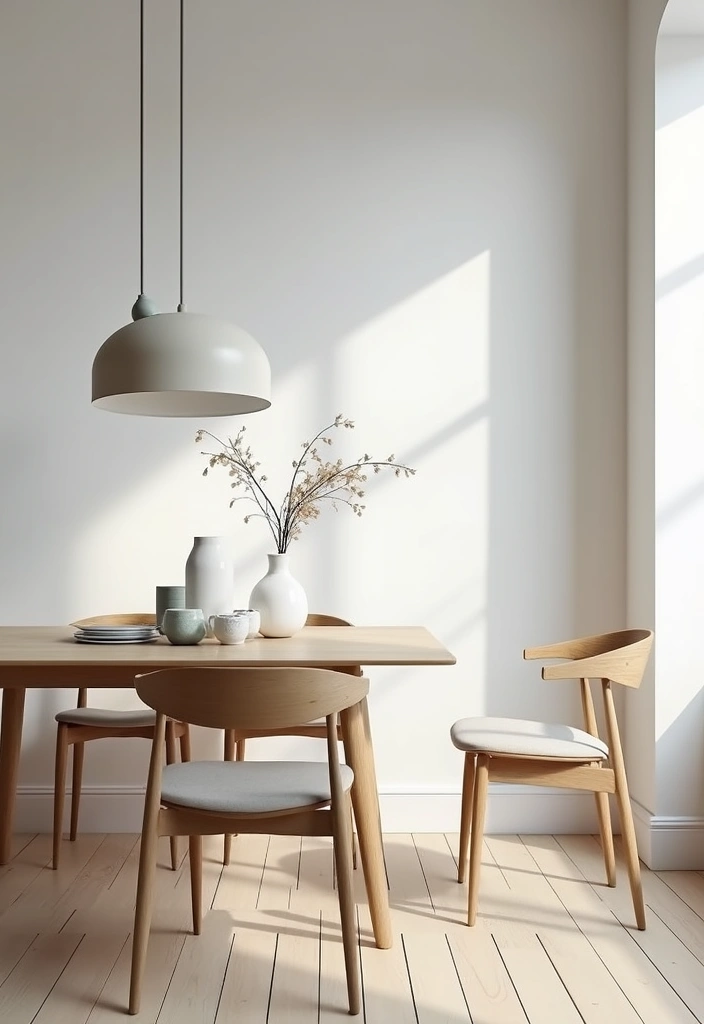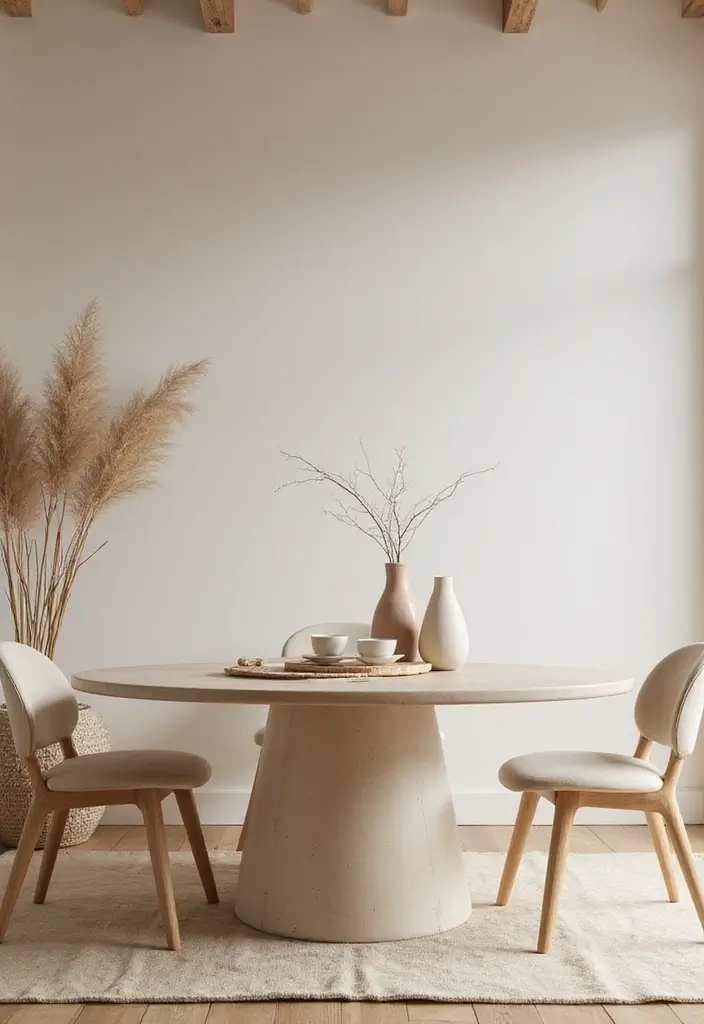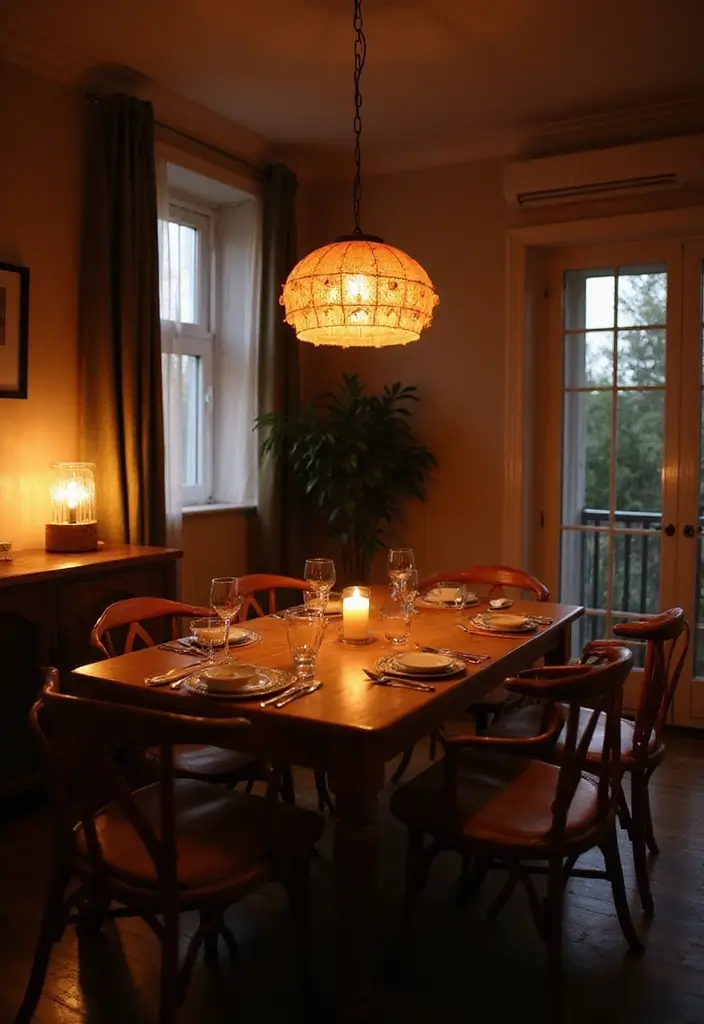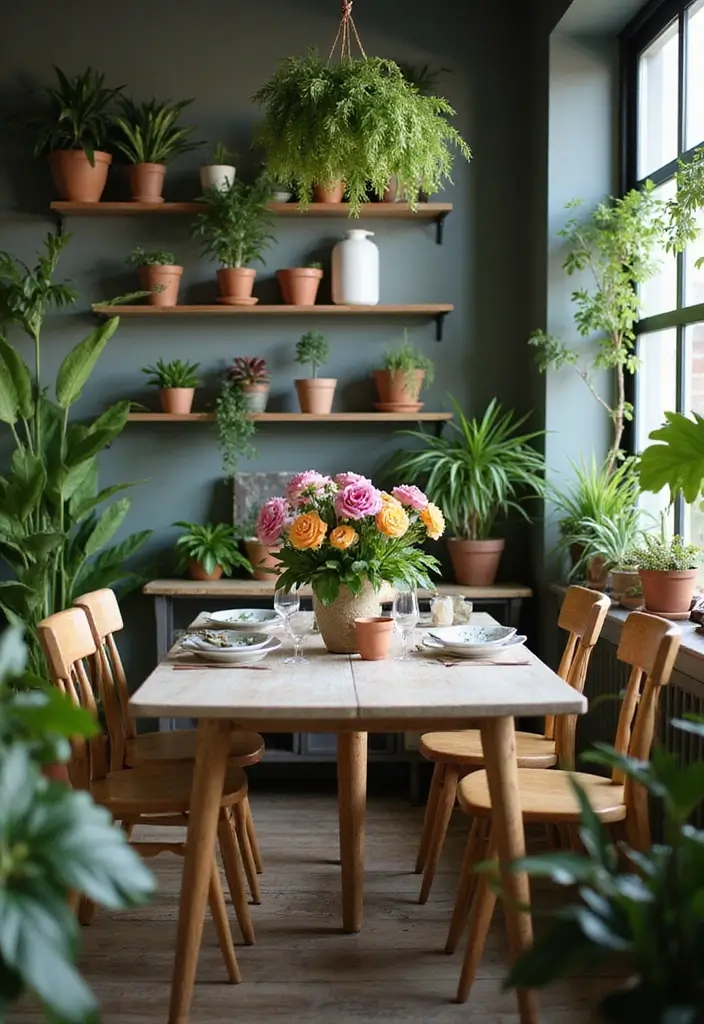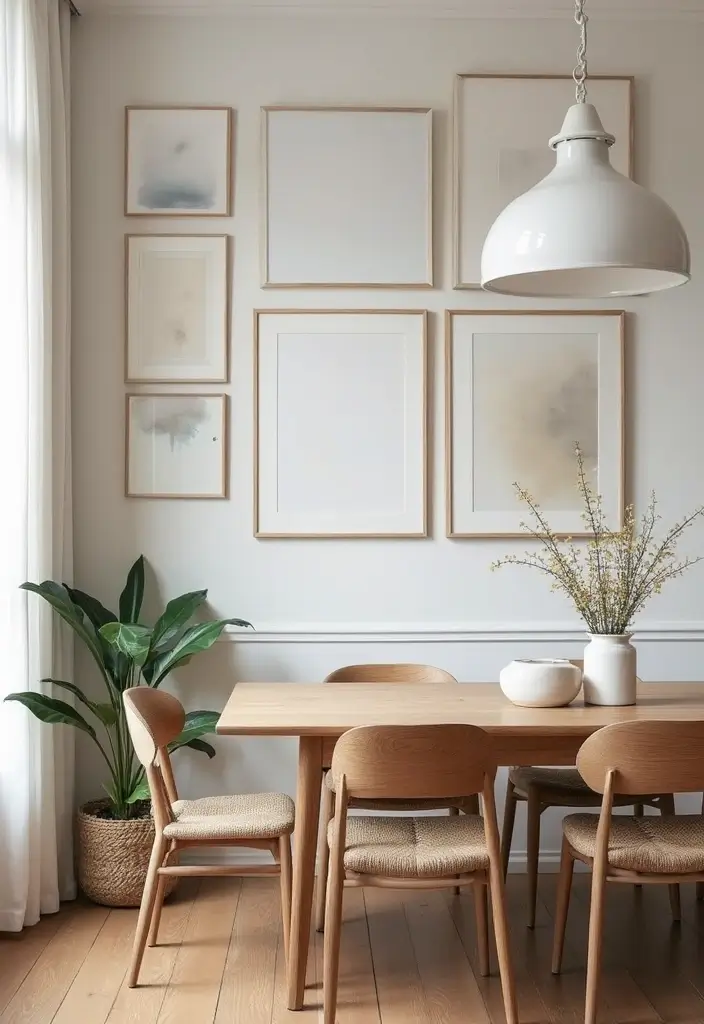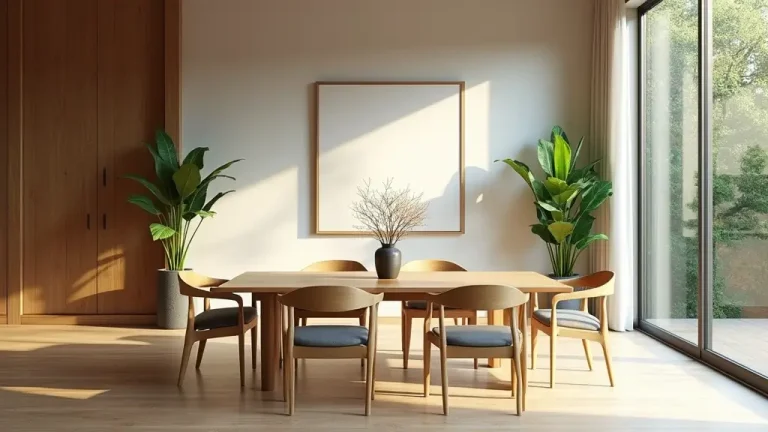How To Create A Cozy Scandinavian Dining Room That Inspires
Did you know a well-designed scandinavian dining room can make meals feel like warm gatherings? Scandinavian style, rooted in Nordic simplicity, creates inviting spaces with minimal effort.
This guide helps you craft a cozy, functional dining room using natural materials and soft textures.
You’ll learn clear steps to achieve a serene look, from choosing wood furniture to adding greenery, all tailored for any home size without overwhelming your space or schedule.
This approach suits beginners and seasoned decorators alike, offering practical tips to balance style and utility. Expect advice on layouts, lighting, and personal touches that reflect your taste while keeping the minimalist charm.
Each section includes steps, materials, and maintenance tips to ensure your dining room feels both timeless and fresh, ready for everyday meals or special occasions.
1. embrace natural materials
Natural materials define Scandinavian dining rooms, grounding spaces with warmth. Oak, bamboo, or reclaimed wood tables and chairs reflect Nordic landscapes, offering durability and calm, as noted by By Crea.
These choices suit any home, from small apartments to large houses, and align with trends toward eco-conscious design.
Select a sturdy oak table for 6-8 people or a round bamboo one for smaller rooms. Pair with woven chairs for texture. Source from retailers like Scandinavian Designs for quality.
Check for FSC-certified woods to support sustainability. This step takes 1-2 days and creates a timeless foundation.
- Start with a wood table as the room’s anchor.
- Choose matte finishes to avoid glossy, unnatural looks.
- Pair with bamboo or rattan chairs for texture.
- Ensure table legs are stable to prevent tipping.
- Dust wood weekly; polish yearly for longevity.
2. play with soft textiles
Soft textiles add coziness, turning functional spaces into inviting ones. Linen runners, wool rugs, and cotton cushions create a hygge vibe without clutter, as seen in Nordic Nest’s collections.
These elements soften wood surfaces, making your dining room feel lived-in and warm.
Drape a neutral runner over your table; add a wool rug underfoot. Choose recycled fabrics for an eco-friendly touch, perfect for small spaces. Arrange cushions on chairs for comfort.
This takes a few hours and suits any home, keeping the look simple yet cozy.
- Select linen or cotton in beige or gray tones.
- Secure rugs with non-slip pads for safety.
- Layer one runner and 2-3 cushions max.
- Wash textiles monthly to keep fresh.
- Avoid bold patterns to maintain simplicity
3. keep it minimalist
Minimalism keeps Scandinavian dining rooms airy and calm. A simple setup with a table, chairs, and open shelves avoids clutter, ideal for small spaces, per Houzz examples.
This approach emphasizes function over decoration.
Use a single wood table and 4-6 chairs; add a shelf for dishes. Arrange to maximize open space, avoiding extra furniture. Anchor shelves to walls for safety.
This takes one day and creates a serene dining area for any home.
- Limit furniture to essentials: table, chairs, shelf.
- Arrange for clear pathways, at least 3 feet wide.
- Use open shelves for functional storage.
- Dust surfaces weekly to maintain cleanliness.
- Avoid adding decorative knickknacks.
4. choose a neutral color palette
Neutral colors like whites, grays, and beiges make rooms feel larger by reflecting light. They create a versatile backdrop, as noted by Edward George London.
Warm neutrals add coziness without overwhelming.
Paint walls soft gray; use beige fabrics for chairs or curtains. Add wood tones for depth. Use low-VOC paints for safety, and select natural-fiber fabrics.
This takes 1-2 days and suits any dining room, keeping it calm and inviting.
- Paint walls in soft white or light gray.
- Use beige or taupe for textiles and accents.
- Add wood furniture for natural contrast.
- Ventilate during painting to avoid fumes.
- Spot-clean fabrics; repaint every few years.
5. integrate ambient lighting
Ambient lighting sets a warm dining mood. Pendant lights in organic shapes like rattan or metal are popular, per Viesso trends. They highlight tables without harsh glare.
Hang a dimmable pendant 30 inches above your table. Choose LED bulbs for efficiency and rattan or chrome for style. Hire an electrician for safe installation.
This takes one day and enhances any dining room’s coziness.
- Select a rattan or metal pendant light.
- Use dimmable LED bulbs for flexibility.
- Hang low over the table for intimacy.
- Clean fixtures monthly to remove dust.
- Avoid bright, non-dimmable bulbs.
6. add greenery for life
Greenery brings vibrancy, connecting your dining room to nature. Potted ferns or succulents add a biophilic touch, as seen in Pinterest trends. They’re low-maintenance and fit any space.
Place a small fern on your table or succulents on shelves. Use ceramic pots for style. Avoid toxic plants if you have pets or kids. This takes a few hours and refreshes your dining room instantly.
- Choose low-maintenance plants like succulents.
- Use 2-3 plants to avoid overcrowding.
- Place in ceramic pots for Scandi style.
- Water weekly; rotate for even growth.
- Check for pet-safe plant varieties
7. personalize with art
Minimalist art adds character without disrupting simplicity. Black-and-white prints or abstracts in neutral frames work well, per Nordic Nest. They create focal points in your dining room.
Hang one large print or a small gallery wall above a sideboard. Use wood frames for cohesion. Secure to walls for safety. This takes one day and lets your personality shine through.
- Select abstract or black-and-white prints.
- Use 1-3 pieces for a clean look.
- Hang with secure wall anchors.
- Dust frames monthly to keep fresh.
- Avoid busy or colorful art.
8. create a functional layout
A functional layout ensures easy movement and usability. Tables near windows maximize light, as shown in IKEA’s Scandi designs. This keeps your dining room practical and open.
Position your table with 3 feet of walking space around it. Use benches for small spaces to save room. Measure your space first to avoid crowding. This takes 1-2 days and suits any home.
- Place table near a window for light.
- Use benches or slim chairs for small rooms.
- Ensure clear pathways for safety.
- Adjust layout for larger gatherings.
- Measure space before rearranging.
9. incorporate unique accessories
Unique accessories like ceramic vases or woven baskets add subtle flair. Metallics like chrome are trending, per Viesso, for a modern touch. They enhance style without clutter.
Place a ceramic vase or metallic tray on your table. Limit to 2-3 items for simplicity. Ensure heavy pieces are stable to avoid tipping. This takes a few hours and elevates your dining room.
- Choose ceramics or metallics for accents.
- Limit to 2-3 accessories per surface.
- Use stable bases for safety.
- Clean weekly to avoid dust buildup.
- Avoid oversized or cluttered items.
10. reflect your personality
Personal touches make your dining room unique. Heirlooms or custom art blend with Scandi minimalism, as seen in Houzz galleries. They add character while keeping the look cohesive.
Display a family photo in a wood frame or use vintage ceramics. Integrate one or two personal items to avoid clutter. This takes one day and makes your space feel personal.
- Add one family photo or heirloom piece.
- Use neutral frames for cohesion.
- Secure heavy items to shelves.
- Rotate items seasonally for freshness.
- Balance personal items with minimalism.
conclusion
A Scandinavian dining room combines natural materials, neutral tones, and smart layouts for a cozy, functional space. You can create this look with a wood table, soft textiles, and minimal decor.
Add plants and art for personality, keeping simplicity at the core. This guide offers clear steps to design a dining room that feels warm and timeless, perfect for meals or gatherings.


